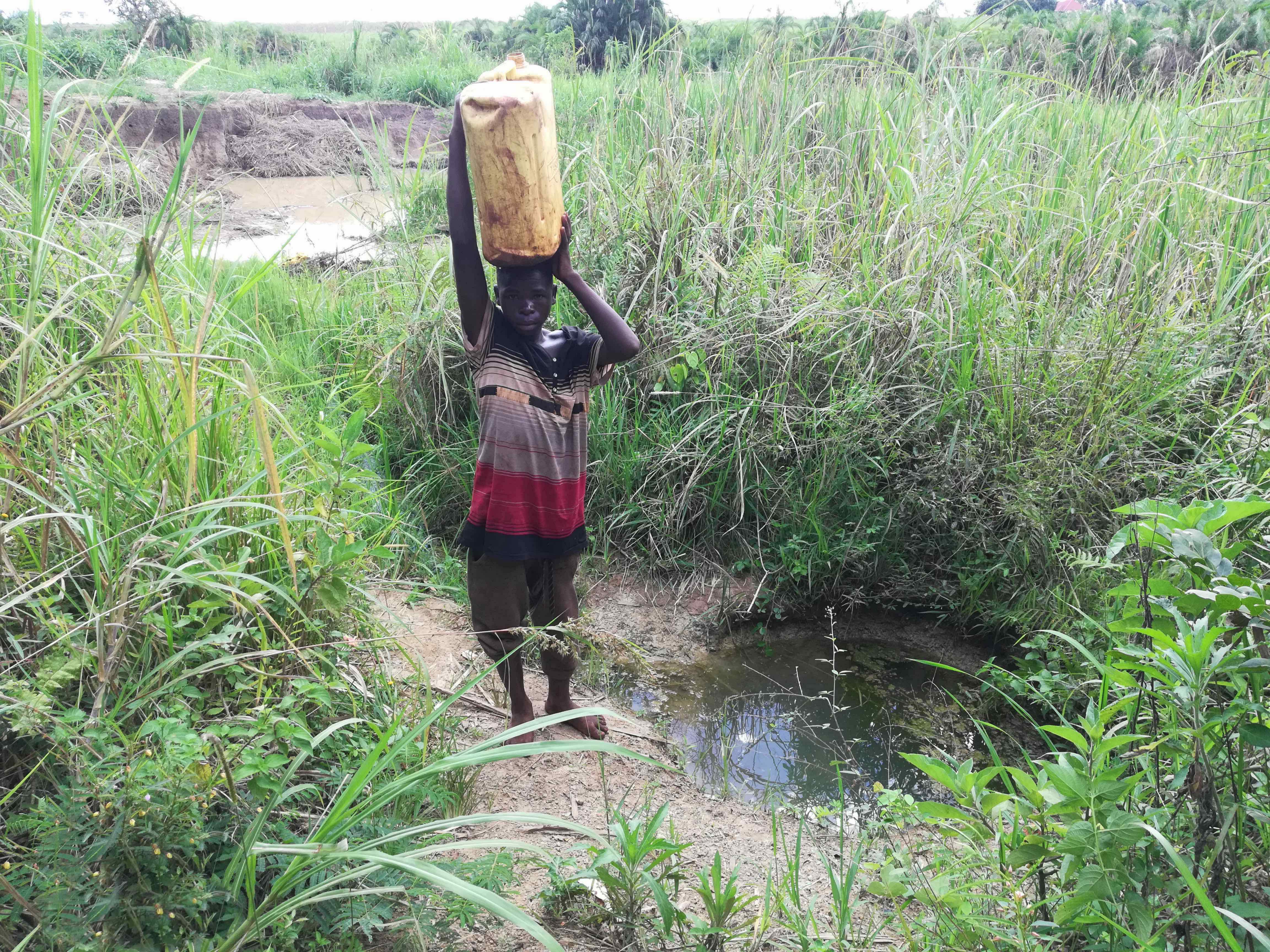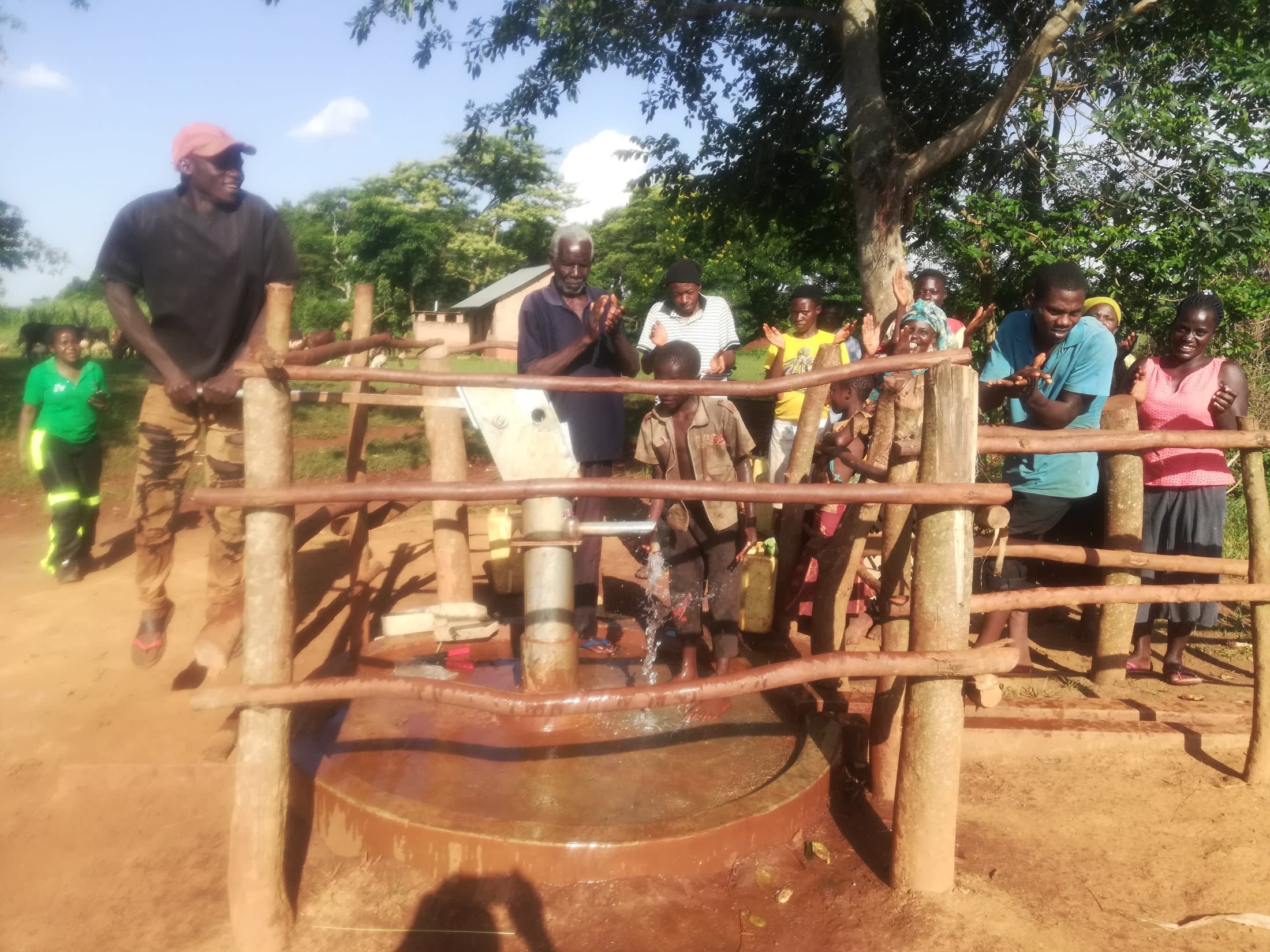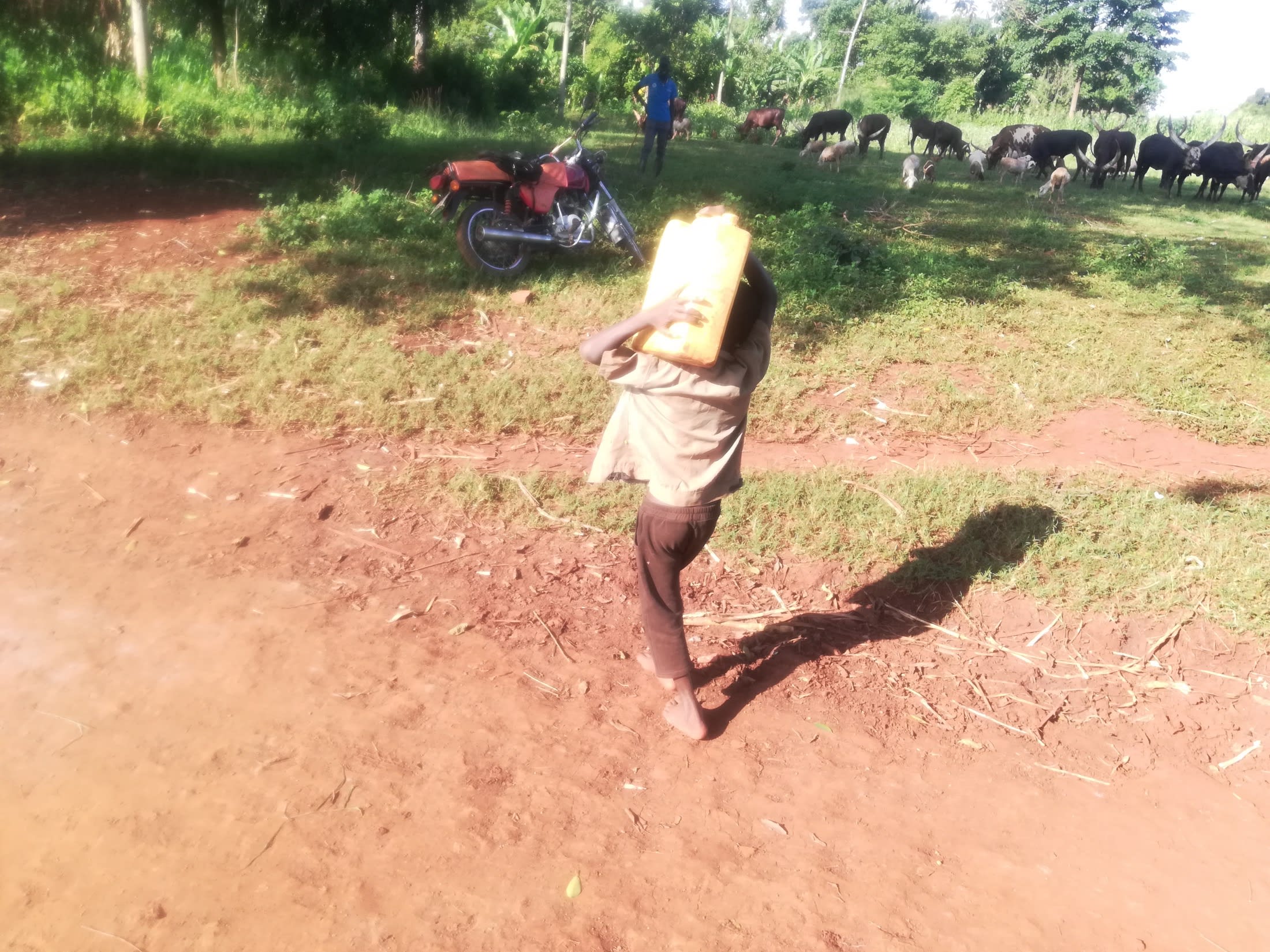The community of Kitamba, Uganda spends a great deal of their day collecting water, limiting their time for other productive activities. The current water source for the community members requires a nearly two-hour round trip, at least once, sometimes twice a day, to meet daily needs. After the long, tiring journey, individuals arrive at the well to find long lines due to overcrowding, especially in the evening hours.
The different seasons bring their unique challenges. In the rainy season, the water becomes contaminated by runoff entering the catchment area. Access becomes more difficult because the sloping path is slick and challenging to navigate safely. During the dry season, the wait times become even longer since people can not harvest any supplemental rainwater and the well often breaks from overuse.

Jolly Atekaniza (33), a married mother of six, described her challenges daily to ensure her family has water: “There is a lot of suffering as far as access to clean drinking water is concerned. A lot of productive time is wasted in collecting water. I walk a distance of about 2 Kms, spending one to two hours to get water home."
She continued, "Also, whenever it is a dry season and the water point breaks down, most people resort to collecting water from open wells. We indeed need urgent and great assistance on the water in this catchment of Kitamba Kyamuhoro.”

Some in the community are fortunate to have bicycles to help transport water and others are not. Tumusiime H., a 14-year-old pupil of Kitamba Primary School, shared his experience, "I spend a lot of time on the way and even at the water point waiting for the long queue, which takes me about one to two hours to get back home with water. At most times, I normally use a bicycle to collect water, and when the bicycle breaks down, it becomes hard to get water on my head for that long distance."
Here’s what we’re going to do about it:
New Borehole
This new borehole is an exciting opportunity for this community! We work with the community to determine the best possible sites for this well.
We conducted a hydrogeological survey and the results indicated the water table is an ideal candidate for a borehole well. Due to a borehole well's unique ability to tap into a safe, year-round water column, it will be poised to serve all of the water needs for this community, even through the dry months.
Community members will help collect the needed construction materials such as sand, rocks, and water for mixing cement. They will also provide housing and meals for the work team, in addition to providing local laborers. We will complement their materials by providing an expert team of artisans and drilling professionals, tools, hardware, and the hand-pump. Once finished, water from the well will then be used by community members for drinking, handwashing, cooking, cleaning, and much more.
Training
Training’s main objectives are the use of latrines and observing proper hygiene practices since these goals are inherently connected to the provision of clean water. Open defecation, water storage in unclean containers and the absence of hand-washing are all possible contaminants of a household water supply. Each participating village must achieve Open Defecation Free status (defined by one latrine per household) prior to the pump installation for this borehole well.
This social program includes the assignment of one Community Development Officer (CDO) to each village. The CDO encourages each household to build an ideal homestead that includes: a latrine, a handwashing facility, a separate structure for animals, a rubbish pit and a drying rack for dishes.
We also implement the Community-Led Total Sanitation (CLTS) approach with each of our village partners. This aims to improve the sanitation and hygiene practices and behaviors of a village. During these sessions, village leaders naturally emerge and push the community to realize that the current practices of individual households – particularly the practice of open defecation – are not only unhealthy, but affect the entire village. CLTS facilitates a process in which community members realize the negative consequences of their current water, sanitation and hygiene behaviors and are inspired to take action. Group interactions are frequent motivators for individual households to build latrines, use them, and demand that other households do the same.
Improved Sanitation
The aim is that all households own an improved latrine. Many households do not use a latrine but use the bush. Due to open defecation, feces are spread all over the village. This leads to waterborne diseases and contamination of groundwater and surface water. Our aim is that the community is able to live a healthy life free of preventable diseases. We endeavor that at the end of our presence in the community, people will have both access to sustainable, clean water and access to sanitation. We have now organized families to form digging groups for latrine construction, and empowered them with tools to use.

 Borehole Well and Hand Pump
Borehole Well and Hand Pump
 Rehabilitation Project
Rehabilitation Project




























